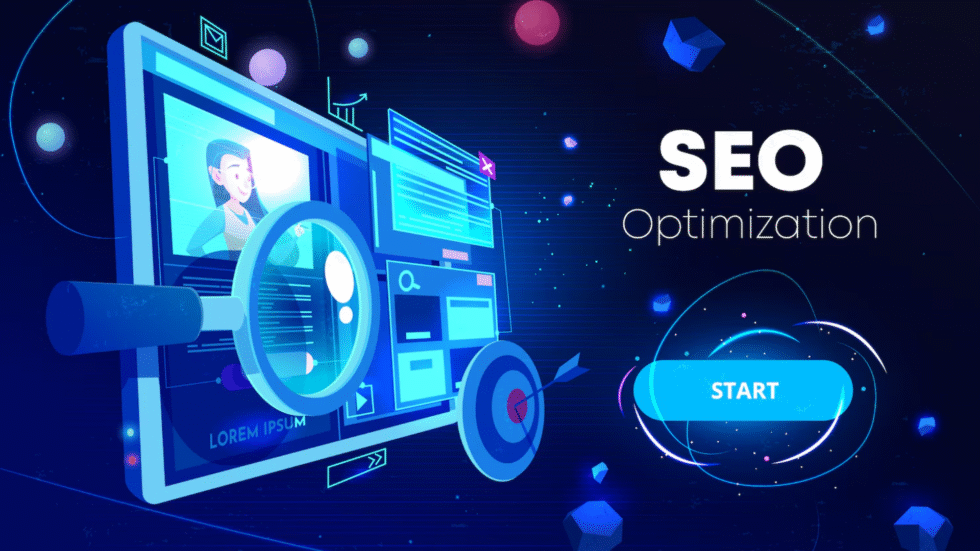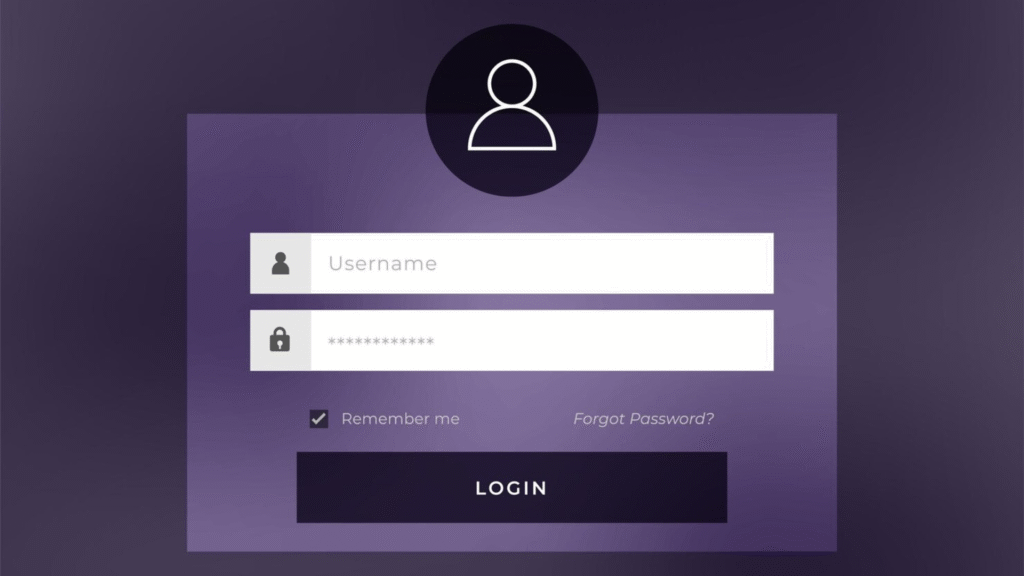
Introduction: More Than Just a Gateway
You’ve invested countless hours creating valuable content for your website, optimizing every page for SEO, and building your online presence. But what if one of the most overlooked elements of your site – your login page – is actually sabotaging your Google ranking efforts?
Many website owners focus on optimizing their main content pages while completely ignoring how their gated content and login systems affect their website ranking. This oversight can lead to serious SEO optimization problems that confuse search engines and frustrate users.
The reality is that Google’s crawlers encounter your login pages just like any other visitor, and how you handle these interactions can make or break your search visibility. Let’s explore why your login page might be hurting your search engine marketing efforts and what you can do about it.
The Core Problems: Why Generic Login Pages Confuse Google

Duplicate Content Issues: When multiple URLs on your site all redirect to the same, bare-bones login page, Google’s crawlers see them all as identical pages. This creates a massive duplicate content problem that can severely impact your Google SEO performance. Search engines struggle to understand which version to index, often defaulting to the generic login page instead of your valuable content.
This issue becomes particularly problematic for SEO services providers and businesses with extensive member areas. When Google encounters dozens of URLs that all lead to the same login form, it treats them as duplicate content, potentially causing your site to lose ranking power across multiple pages.
Missing Context: Generic login pages lack the contextual information that helps Google understand your site’s purpose and value. A login page with nothing but a simple form doesn’t provide any clues about your SEO marketing strategy, your services, or why users should engage with your content.
Without proper context, search engines can’t effectively categorize your site or understand its relevance for specific search queries. This lack of understanding directly impacts your ability to rank for relevant SEO keywords and can result in poor search performance.
Misleading Search Results: Perhaps most frustrating for users, poorly optimized login pages can appear in search results when people are looking for your actual content or services. Imagine potential clients searching for your SEO agency and being served a generic login page instead of your informative service pages or helpful blog content.
This creates a terrible user experience and can damage your brand reputation. Users expect to find valuable information when they click on search results, not a barrier that prevents them from accessing content.
Common (and Bad) Solutions to Avoid
Do Not Rely on robots.txt: One of the most dangerous mistakes in Google search engine optimization is using robots.txt to block private areas. While this tells Google not to crawl specific pages, it doesn’t prevent the URLs from being indexed.
This can lead to search results showing “no information available” snippets for your pages – a potential security risk that also creates a poor user experience. SEO specialists consistently warn against this approach because it can actually make your indexing problems worse.
Do Not Use JavaScript to Hide Content: Hiding content with JavaScript is considered a form of cloaking and violates Google’s guidelines. Modern search engine crawlers can execute JavaScript, which means your “hidden” content might still be accessible and indexed unexpectedly.
This approach can lead to penalties and unpredictable indexing behavior that undermines your SEO optimization efforts. It’s particularly problematic for local SEO businesses that need consistent, reliable search visibility.
The Right Way to Fix It: Actionable SEO Solutions
Solution 1: Use the noindex tag. The most straightforward solution for protecting your website ranking is implementing proper noindex tags. Adding <meta name="robots" content="noindex"> to private pages and login pages tells Google to crawl the page for understanding but not include it in search results.
This approach allows search engines to understand your site structure while preventing inappropriate pages from appearing in search results. It’s a clean solution that SEO companies for small business often recommend because it’s simple to implement and highly effective.
Solution 2: Implement Proper Redirects. Instead of showing a generic login page for every private URL, redirect all logged-out requests to a single, well-optimized landing page. This consolidates potential duplicate content issues and provides a better user experience.
Your redirect strategy should funnel users to pages that provide value and context about your services. For local SEO services providers, this might mean redirecting to a location-specific landing page that explains your offerings and includes relevant contact information.
Solution 3: Provide Context on the Login Page. Even with proper redirects, your final login page should provide meaningful context about your business. Include brief descriptions of your services, value propositions, and branding elements that help both users and search engines understand your site’s purpose.
Best SEO companies for small business often recommend including:
• A clear description of what users will access after logging in
• Key service offerings and benefits
• Contact information and location details for local businesses
• Links to public content like blog posts or service pages
• Trust signals like testimonials or certifications
Solution 4: Utilize Paywall Structured Data. For sites offering gated content like premium articles or courses, implement paywall structured data. This allows Google to see and index your content while understanding that it’s behind a paywall or login requirement.
This approach is particularly valuable for search engine marketing strategies that rely on content marketing. It enables your gated content to appear in search results with appropriate paywall indicators, setting proper user expectations while maintaining search visibility.
Advanced Strategies for Better Login Page SEO
Create Multiple Targeted Landing Pages: Instead of using a single generic login page, create multiple targeted pages based on user intent or traffic source. Surfer SEO and similar tools can help you optimize these pages for specific keyword clusters.
For example, create separate login pages for:
• New user registration with onboarding information
• Existing customer login with account benefits
• Free trial access with conversion-focused messaging
• Partner or affiliate login with relevant resources
Implement Smart Internal Linking: Use your login and gated content pages as opportunities to strengthen your internal linking structure. Include contextual links to relevant public content, service pages, and resources that support your overall SEO strategy.
This approach helps distribute page authority throughout your site while providing users with alternative pathways to valuable content. It’s particularly effective for all in one SEO strategies that aim to maximize the value of every page on your site.
Optimize for User Intent: Consider why users are reaching your login page and optimize accordingly. Are they existing customers trying to access their accounts? Potential clients exploring your services? Understanding user intent helps you create more effective pages that support both user experience and SEO marketing goals.
Measuring and Monitoring Your Progress
Track Key Metrics: Monitor how your login page optimizations affect your overall Google ranking performance. Key metrics to watch include:
• Organic traffic to gated content URLs
• Click-through rates from search results
• User engagement metrics on login and landing pages
• Conversion rates from login page traffic
• Search console data for indexing issues
Regular Audits: Conduct monthly audits of your gated content and login page performance. Use tools like Google Search Console to identify any new indexing issues or unexpected appearances of private pages in search results.
A/B Testing: Test different approaches to login page optimization to find what works best for your specific audience and business model. This might include testing different messaging, layouts, or redirect strategies to maximize both user experience and SEO performance.
Conclusion: Audit and Optimize
Your login page and gated content strategy can significantly impact your overall SEO optimization success. The key is avoiding duplicate content issues, providing proper context for search engines, and using appropriate technical implementations like noindex tags and strategic redirects.
Take Action Today: Open an incognito browser window and search for your brand or main services. What appears in the search results? If you see generic login pages or “no information available” snippets, it’s time to implement the solutions outlined in this guide.
Remember that SEO for beginners and experienced professionals alike can benefit from paying attention to these often-overlooked technical details. Small improvements to how you handle gated content can lead to significant gains in search visibility and user experience.
Start with a simple audit of your current login page setup, then implement the appropriate solutions based on your specific needs and technical capabilities. Your future search rankings – and your users – will thank you for the effort.
Ready to optimize your login pages for better SEO performance?
Begin by reviewing your current setup and identifying any duplicate content or indexing issues. What challenges are you facing with gated content and search visibility? Share your experiences in the comments below.







